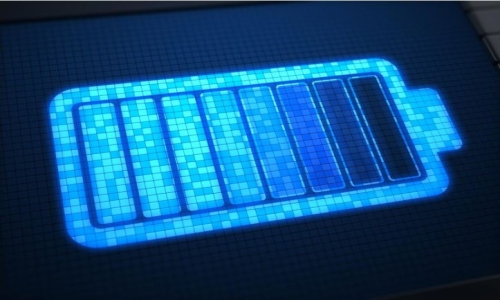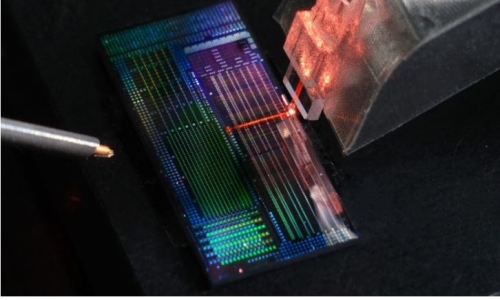


 4:26:49
4:26:49  2024-09-15
2024-09-15  838
838

Mars has spiders unlike anything else in the Solar System. Between the ocher dunes, across the scars of impacts, long-legged shadows appear to scuttle across the dust.
They aren't actual, living spiders. These tendrilled shapes that appear in satellite images of the red planet are made, like almost everything on Mars, from dust. They're known as araneiforms, small systems of dark troughs that appear only in the southern polar region of Mars in the planet's spring.
Exactly how the araneiforms emerge every Martian year has been something of a mystery. Now, scientists on Earth have recreated them in the lab – giving us new insights into the processes that shape the alien landscapes of Mars.
"The spiders are strange, beautiful geologic features in their own right," says planetary scientist Lauren Me Keown of NASA's Jet Propulsion Laboratory. "These experiments will help tune our models for how they form."
There are many differences between natural phenomena on Earth and Mars. On Mars, conditions get so cold that carbon dioxide freezes into ice – something that doesn't happen in nature here on Earth, where it can be made under special conditions and is known as dry ice.
One interesting thing about carbon dioxide is that it doesn't have a liquid form. Its frozen form sublimes straight into a gas. This is what Mc Keown and her colleagues thought might be responsible for the Martian spiders.
This explanation for araneiforms is known as the Kieffer model, after geophysicist Hugh Kieffer, who described the formation processes in 2006 and 2007. During the cold winter on Mars, carbon dioxide from the atmosphere freezes on the ground. Then, when spring rolls around, and temperatures rise, this carbon dioxide ice returns to its gaseous state.
This, however, can happen from the bottom of a deposit of ice, with darker mars dirt beneath absorbing the heat. This traps the sublimated gas under the slabs of ice above.
With nowhere for the gas to go, pressure builds until the ice cracks in a small explosion; the carbon dioxide gas escapes through these cracks, carrying darker, dusty material with it. Once all the ice has disappeared back into the atmosphere, a dark, spider-like scar is left behind.
To try and recreate the process, Mc Keown and her colleagues used a barrel-sized chamber known as the Dirty Under-vacuum Simulation Testbed for Icy Environments, or DUSTIE. This apparatus is designed to replicate the temperature and atmospheric pressure of Mars.
The researchers took a simulant of the Martian regolith – a mixture of minerals in size and composition to replicate the dirt on Mars – and cooled it in liquid nitrogen before placing it in the chamber, which had been tuned to the pressure and temperature conditions of Martian winter.
Then, they released carbon dioxide into the chamber, where it froze onto the simulant. Finally, when enough carbon dioxide had accumulated, the researchers warmed the chamber up. After many attempts and much tweaking of the conditions in the chamber, the ice finally exploded.
"It was late on a Friday evening and the lab manager burst in after hearing me shrieking," Mc Keown recalls. "She thought there had been an accident."
Sure enough, the conditions in the chamber had produced, in miniature, the same spider-like shape seen at the south pole of Mars. The gas had streamed out, carrying dust with it, creating the tendrilled form on the surface. But there was a surprise.
The ice had formed within the dirt layer, not on top between the dirt and ice as predicted. So when the gas burst out, the cracks that were left behind were the result of that explosive escape from within, not surface scouring.
The Kieffer model, the researchers concluded, was an accurate representation of the processes that produce, not just the spiders, but other seasonal features that appear on the surface of Mars.
In future research, the team hopes to fine-tune and adapt their experiments to understand these features and their formation in greater detail.
They'd just better not come crying when alien spiders are suddenly infesting NASA HQ.
Reality Of Islam |
|

Stanford, C

A new study

Researchers

A new chip-
 9:3:43
9:3:43
 2018-11-05
2018-11-05
10 benefits of Marriage in Islam
 7:5:22
7:5:22
 2019-04-08
2019-04-08
benefits of reciting surat yunus, hud &
 9:45:7
9:45:7
 2018-12-24
2018-12-24
advantages & disadvantages of divorce
 11:35:12
11:35:12
 2018-06-10
2018-06-10
 6:0:51
6:0:51
 2018-10-16
2018-10-16
 8:15:37
8:15:37
 2023-02-16
2023-02-16
 9:50:37
9:50:37
 2023-02-28
2023-02-28
 9:30:2
9:30:2
 2021-11-12
2021-11-12
 1:34:8
1:34:8
 2022-02-01
2022-02-01
 10:47:11
10:47:11
 2022-11-22
2022-11-22
 9:39:36
9:39:36
 2022-12-28
2022-12-28
 12:47:1
12:47:1
 2022-12-20
2022-12-20
 5:41:46
5:41:46
 2023-03-18
2023-03-18
| LATEST |